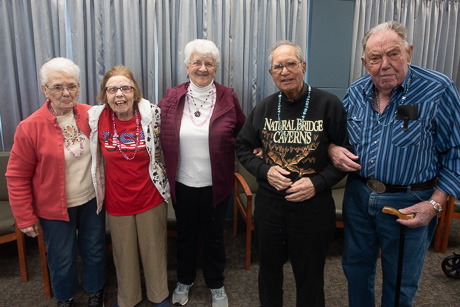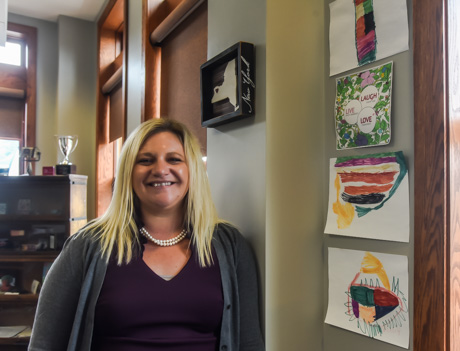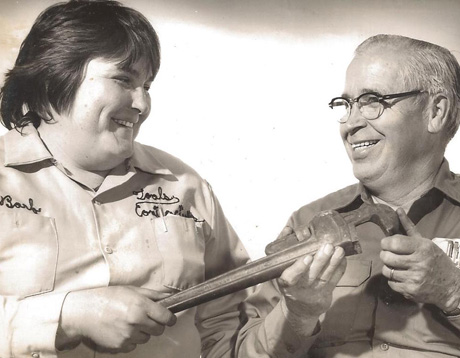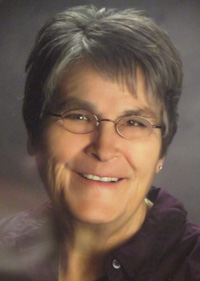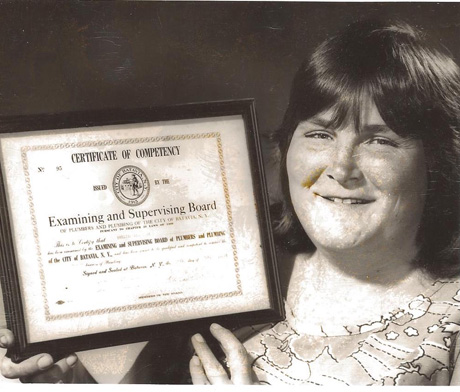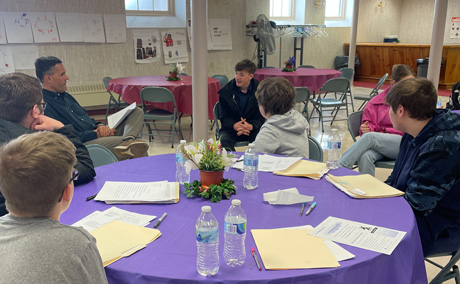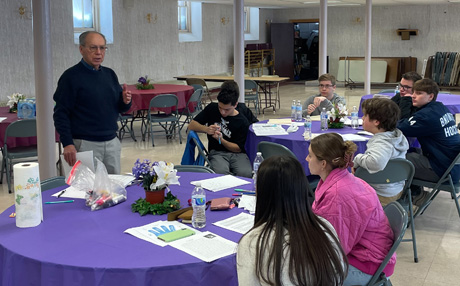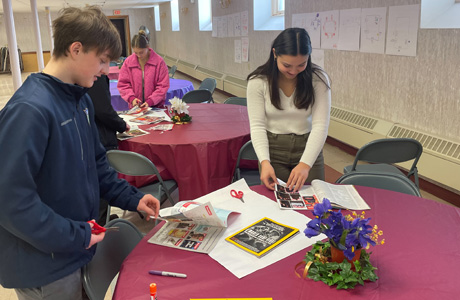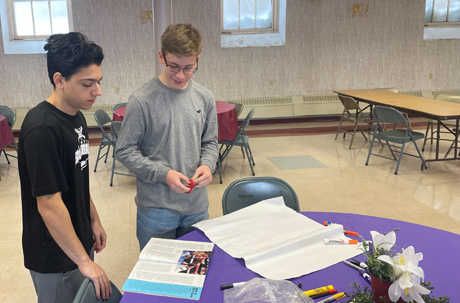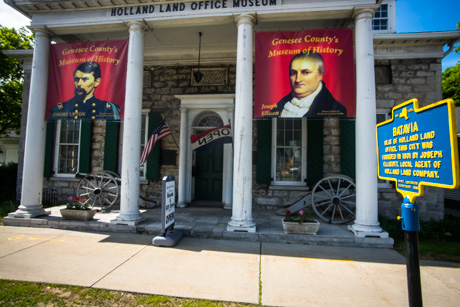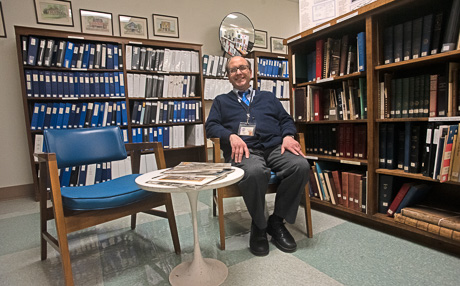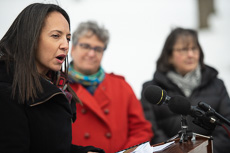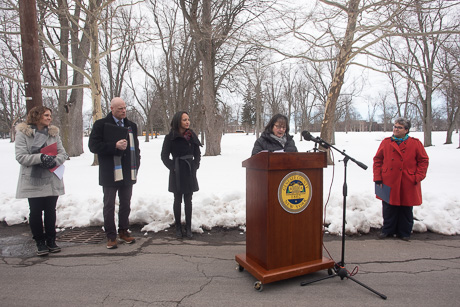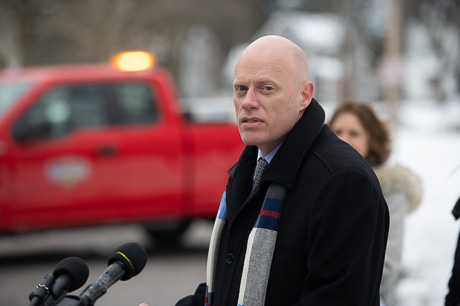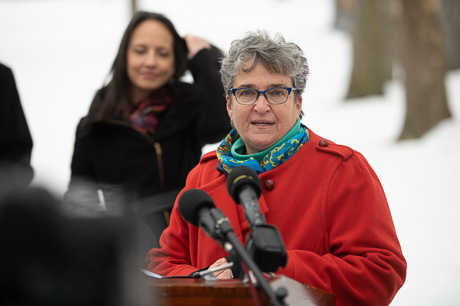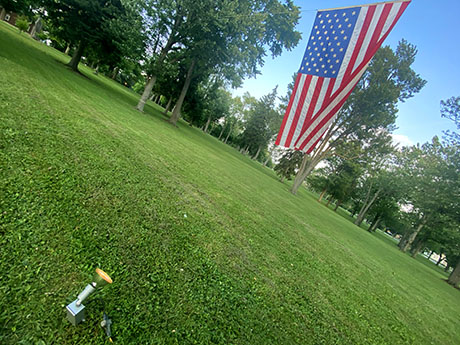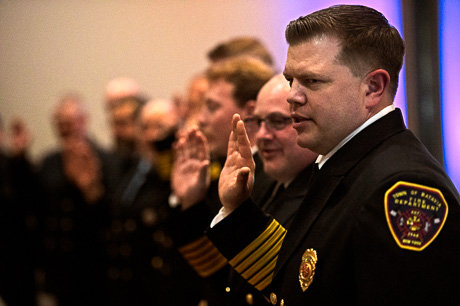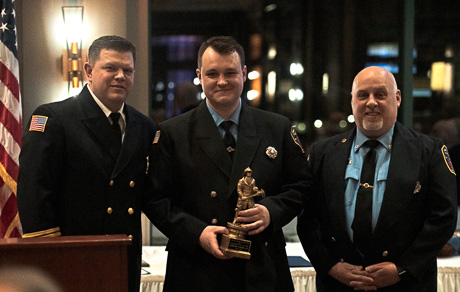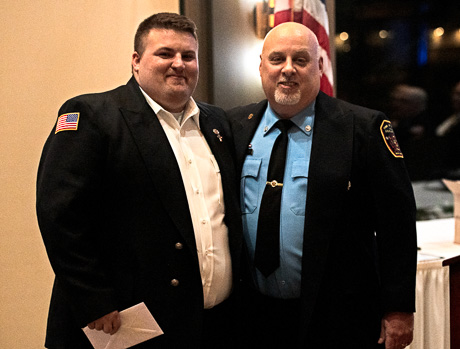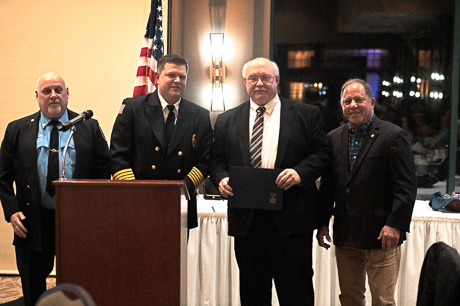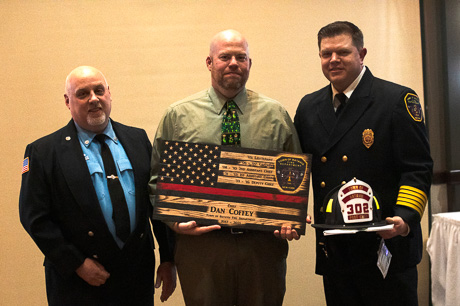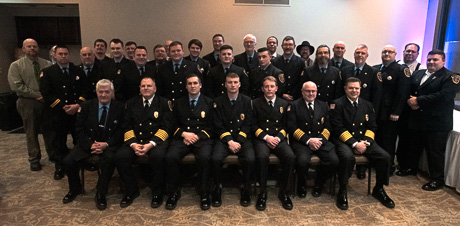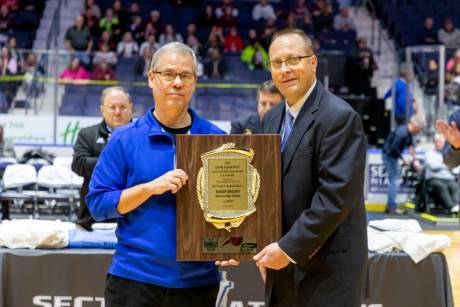Centennial Park isn't what it once was, and a new plan unveiled at a press conference Monday aims to restore some of its previous features and make it more environmentally compatible with a changing climate.
Some 60 trees, out of about 200 trees, will be removed -- mostly silver maples -- and another 400 trees and shrubs of various species (all native to the region but also compatible with a warming environment) will be planted over the next five years, with one of the main features of the original park being restored: grass footpaths.
The plan is part of a state-driven initiative for communities to create resiliency plans. The changes at Centennial Park are just one aspect of the countywide initiative.
Kisha Santiago-Martinez
"This plan presents a comprehensive, holistic approach to addressing and preparing for the many challenges we confront in the face of more frequent and severe storm events," said Deputy Secretary of State Kisha Santiago-Martinez. "By developing and implementing this plan, you are proactively helping to ensure that the county, its municipalities, residents and businesses are better prepared to confront and recover from natural disasters."
The draft plan for the park states that it "addresses the role of the park in the ecological network and calls for action in these areas of concern: urban heat island effects, public health, mitigation of storm-water runoff, biodiversity and climate change."
The Centennial Park plan calls for the creation in the park of resilient habitats through the introduction of climate-adaptive native plant communities.
Plants will be selected to provide a tree canopy along with under-canopy tree species, as well as shrub species that support pollinators and wildlife.
The history of Centennial Park -- at one time known as State Park because of its affiliation with the New York State School for the Blind -- goes back to the 1880s, when Asa Lord, the first superintendent of the school, spearheaded the effort to create a green space with walking paths, ponds, trees, flowerbeds, a bandstand and a gazebo.
The park was deeded to the City of Batavia in 1969.
Over time, many of the features of the park disappeared -- the ponds, the flowerbeds, the bandstand, and the gazebo, and unless you knew where to look, there's little trace of the former walking paths.
David Beatty, a Batavia resident who served on the committee that helped develop the plan for Centennial Park, said there has been a real effort in the plan to both preserve the history of the park and enhance its enjoyment for community members who visit it as the city's primary open green space.
"We'll be removing a lot of trees, but the trees that remain, though, they'll blend in with our new plan," Beatty said. "It's really species driven, ecologically driven. The idea was to reinforce the old historic patterns with the pathway patterns by the vegetation, the trees."
The paths will be grass but maintained so that they're clearly visible.
"It is a key design element to remain with grass," Beatty said. "The idea is to use the maintenance crew, in the summers, to keep the path mowed, so the grass in the paths will be shorter and let the park be visible, let the park grow. Don't mow it. Manage it."
As part of the plan, one of the things that will change is the removal of the golden, red, and orange leaves that fall into the ground in October and November.
The report states:
Rake (or blow) fallen leaves around tree groups to create a mulch bed. Do not mulch fallen leaves with the mower, as this will destroy Lepidoptera eggs laid on the underside of tree leaves (primarily oak leaves). Leaf litter also provides shelter for overwintering adult Lepidoptera and caterpillars in diapause Additionally, leaf litter helps to retain soil moisture and recycles nutrients to the soil.
County Legislator Marianne Clattenburg noted during her remarks at the press conference that Centennial Park has served in recent years as a hub of community events. At one time, it hosted Picnic in the Park. It continues to host the GLOW Corporate Cup, performances by Batavia Concert Band, a recent Lemonade Stand fundraiser as well as the first pine box derby in the community in decades. There is also the annual Kiwanis Easter Egg hunt in the park.
"As you can see, Centennial Park is a beautiful resource, but it is also the hub of community gatherings," Clattenburg said. "Resiliency plans such as this are tremendously important, as we recognize the need to plan for the future in order to preserve the treasures of the past."
Beatty said preserving space for community events was a specific point of discussion by the committee.
The problem might be parking.
When there are large events at Centennial Park, attendees tend to park their cars on the grass along Park Avenue even though the entire area is posted "no parking."
And it's important, Beatty said, that people don't park on the grass because the cars compact the soil, damaging the root systems of the trees and shrubs.
"There will be an effort to change the parking patterns," Beatty said. "The city is going to need to figure that out."
There will also be a cinder path along Park Avenue, as there is now along Richmond Avenue, part of the re-imagined park. That will discourage parking along Park Avenue, Beatty suggested.
To fund the multi-year study and plan development, Genesee County partnered with the non-profit New York Green. The plan was also funded with a $250,000 grant from the NYS Department of State Smart Growth Program.
Click here for a 44-page PDF of the Centennial Park plan. It contains details on the three phases of tree planting and what plants are being considered for the park as well as historical, current, and projected maps of the park. You can view in more detail the map reproduced as an illustration at the top of this story, which shows what planners anticipate the park will look like when completed.
NY Green has also created a website dedicated to Genesee County's resiliency plan, which goes well beyond Centennial Park. There you will find a link to the full 454-page report. The 454-page report cites a number of "news" interviews with local elected officials as source material. The un-bylined "articles" appear on images of paper for a seemingly non-existent news publication, "Changing Times."
A press release from the Department of State about the county's resiliency plan lists these objectives:
1. Flood Management/Emergency Preparedness Strategies:
- Increased communication to residents in flood-prone areas of hazards/risks from weather;
- Increased inter-municipal cooperation and coordination for warnings;
- Repurposing of acquired flood-prone properties for conservation or recreation; and
- Implementation of flood protection measures.
2. Land Conservation/Water Quality Protection Strategies:
- Implementation of Green Genesee Road Map; protection of riparian land buffers;
- Obtaining development rights to high-quality farmland;
- Increased agricultural Best Management Practices; and
- Proper management of large-scale solar and related battery storage projects.
Resilient Infrastructure Strategies:
- Usage of green stormwater infrastructure and renewable energy sources;
- Accommodation of sizing for culverts for volume and waterway functionality;
- Expansion of tree planting and maintenance;
- Enhanced water supply infrastructure; and
- Protection of power during severe weather.
4. Community Capacity/Public Education Strategies:
- Preparation of a Local Waterfront Revitalization Plan for the Tonawanda Creek area;
- Education on the incorporation of green infrastructure for municipalities and communities;
- Public information on invasive species reduction;
- Native plant use; and
- Promotion of renewable energy and energy efficiency.
Marianne Clattenburg speaking.
Mark Masse, senior vice president of operations for GCEDC, said among the things businesses looking to locate operations in Genesee County ask about are quality of life issues for employees and what is local government doing to promote environmentally sustainable development.
"Those two questions have taken on a greater significance and importance in today's site selection processes as companies emphasize the well-being of their employees as well as the environment," Masse said. "That is why the GCEDC works so closely with the Genesee County Planning Department and other county and local government agencies on green infrastructure plans, site plan layouts and smart growth principles. The countywide resiliency plan unveiled today looks at preserving public spaces for people to enjoy while also preserving and protecting our water supply and identifying projects to help with the overall environmental quality of our community."
Shelley Stein, chair of the Genesee County Legislature, said, "The resiliency of our valuable land in our natural resources is a hallmark of Genesee County and our dedication to land use planning, and especially as an agricultural community. For instance, one of the goals of Genesee County's smart growth plan is to protect farmland and the rural character of our countryside and maintain the viability of our agriculture. By engaging all sectors of land use planning, desired outcomes and local government partners, including the City of Batavia. It has brought forward a well-thought-out, environmentally sensitive and achievable resiliency plan."
